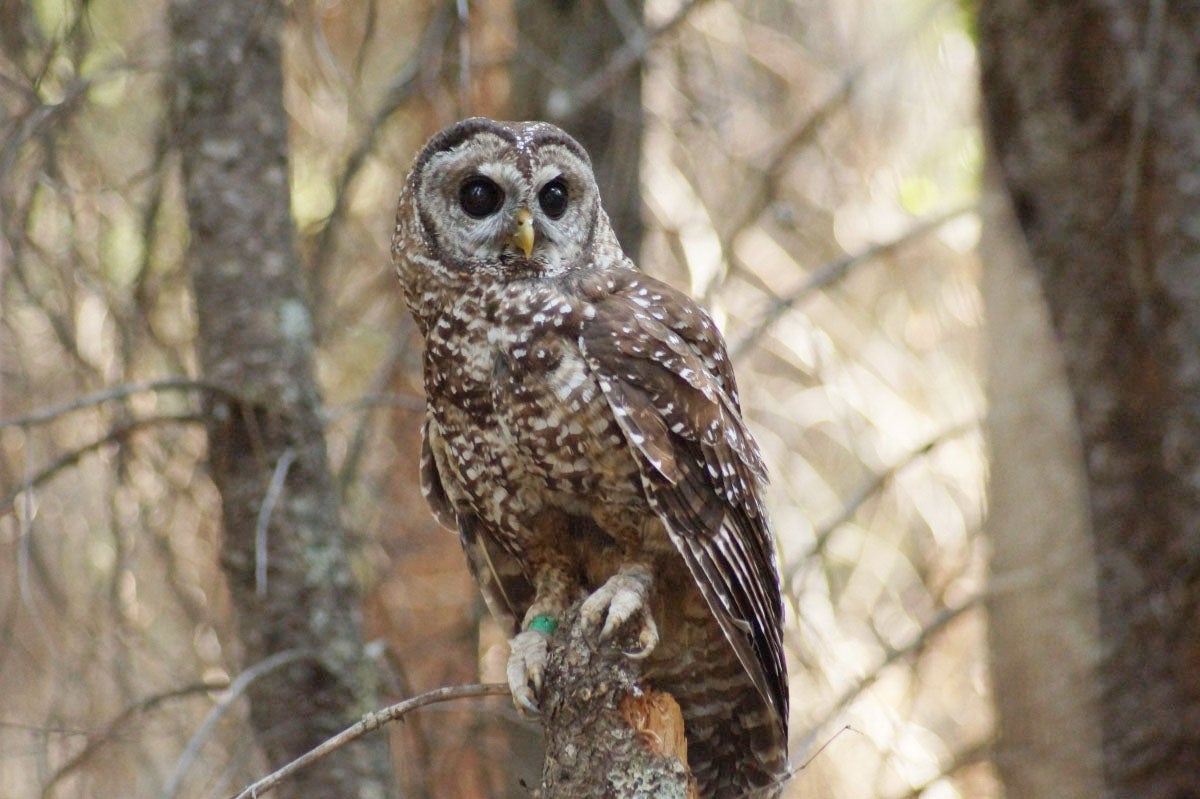Protecting the Sierra Species
The California spotted owl is the last of four native Sierra Nevada species to receive Endangered Species Act protection in the culmination of a 30-year legal fight.
In the summer of 1990, when Germany was reunifying and the band Pearl Jam played its first concert, Time Magazine ran a cover story with the tagline: “In the Northwest’s battle over logging, jobs are at stake, but so are irreplaceable ancient forests.”
Earthjustice, which was still known as the Sierra Club Legal Defense Fund, helped to inspire this story two years earlier when, in 1988, we did what we do best: won a lawsuit. The victory prompted the U.S. Fish and Wildlife Service (FWS) to list the northern spotted owl, a species unique to the Pacific Northwest’s old growth forests, under the Endangered Species Act (ESA).
That victory also began a remarkable legal campaign, spanning many more Earthjustice lawsuits, that forced the U.S. Forest Service to recognize that its role is not to administer logging in our national forests on behalf of lumber companies but to manage those forests in the broader public interest. While the Forest Service remains a work in progress in this regard, it’s no exaggeration to say that our northern spotted owl advocacy completely transformed federal forest management in the Pacific Northwest.
Based on the success of our Pacific Northwest strategy, Earthjustice and our partners decided in the late 1990s to apply a similar strategy in California’s Sierra Nevada mountains — an 11.5 million acre region that encompasses 11 national forests. We started work with our partners by petitioning the FWS to list four species under the ESA, each of which inhabits an imperiled Sierra ecosystem: the mountain yellow-legged frog thrives in pristine high-elevation lakes and streams; the Yosemite toad calls alpine meadows home; and the Pacific fisher and California spotted owl nest and hunt in mid-elevation old forests.
We called the frog, the toad, the fisher, and the owl our “Sierra Species.” Either the Forest Service would embrace its mandate to protect these animals and their remaining habitat, or else we would ensure their protection through the backstop of the ESA, which is largely administered by the FWS. It took persistent, dogged advocacy by literally generations of attorneys, but after years of delay, defeat, and obstruction, Fish and Wildlife finally protected the Sierra Mountain yellow-legged frog in 2013, the Yosemite toad in 2014, and the southern Sierra Pacific fisher in 2020.
That left the California spotted owl. The FWS repeatedly attempted to avoid protecting the species, and we repeatedly challenged its action (and, at times, its inaction). The third time was the charm: in 2019, after seeing our opening brief, the agency folded and agreed to reconsider its position once again. And this time, the FWS finally agreed the owl warrants protection. Last month, it published a proposed rule that would split the California spotted owl into two “distinct population segments” and would list the “southern/coastal” segment as endangered and the “Sierra” segment as threatened.
This is a fabulous development, but we must remain vigilant. After Fish and Wildlife initially proposed protecting the Sierra Pacific fisher, it tried to backtrack and withdraw that rule; we had to sue to reinstate it. We’re also watching to make sure that the FWS doesn’t allow “incidental take” of owls caused by commercial logging.
The Forest Service is still in the process of putting together new forest management plans that will guide its decision-making in the Sierra for the next 15+ years. Because of our persistence, those plans will be shaped in part by the need to protect the spotted owl and our three other Sierra Species.
Sam Sankar (@sambhavsankar) is Earthjustice’s Senior Vice President of Programs. Sam leads our Program Leadership Team, which develops Earthjustice’s strategy for carrying out our mission through litigation, lobbying and regulatory advocacy, and communications.
The Biodiversity Defense Program fights to reshape our relationship to lands, water, and wildlife everywhere by confronting the major drivers of the decline in nature, including habitat destruction and over-exploitation of wildlife.
The California Regional Office fights for the rights of all to a healthy environment regardless of where in the state they live; we fight to protect the magnificent natural spaces and wildlife found in California; and we fight to transition California to a zero-emissions future where cars, trucks, buildings, and power plants run on clean energy, not fossil fuels.
